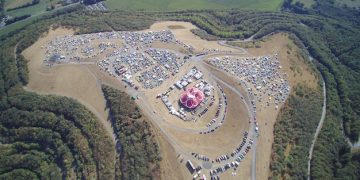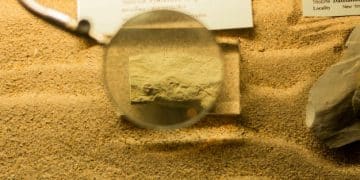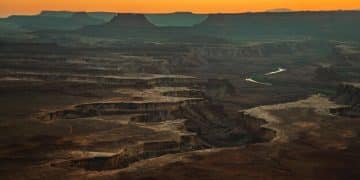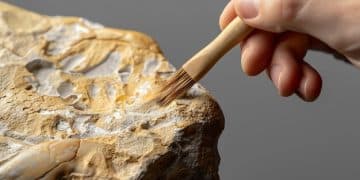Unearthing the Past: The Mystery of the Mound Builders and Recent Archaeological Discoveries
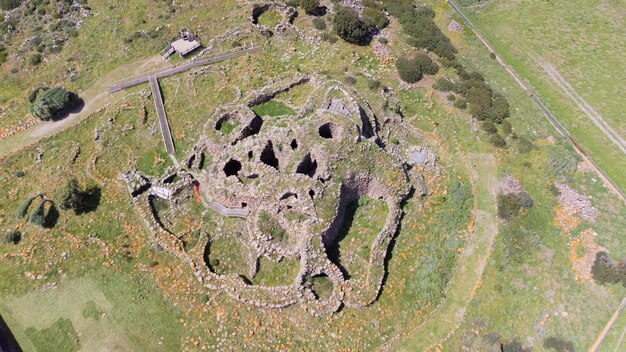
The Mystery of the Mound Builders: What Recent Archaeological Evidence Reveals About Their Culture and Origins continues to intrigue historians and archaeologists. Recent findings shed light on their sophisticated societies, trade networks, and the purpose behind their monumental earthworks, challenging previous assumptions.
The vast landscapes of North America are dotted with enigmatic earthworks, silent sentinels of a bygone era. These mounds, constructed by people known as the Mound Builders, have captivated and puzzled researchers for centuries. The Mystery of the Mound Builders: What Recent Archaeological Evidence Reveals About Their Culture and Origins is a complex and ongoing investigation.
What can the latest archaeological discoveries tell us about these ancient civilizations, their origins, and the reasons behind their remarkable constructions?
Understanding The Mystery of the Mound Builders: What Recent Archaeological Evidence Reveals About Their Culture and Origins
For generations, the term “Mound Builders” has been used to describe the various indigenous cultures that constructed these earthen monuments. Recent archaeological endeavors provide new insights into their lives and customs.
These diverse groups, thriving from around 3500 BCE to the 16th century CE, left behind a legacy of impressive earthworks, ranging from simple burial mounds to complex ceremonial centers.
Who Were These Mound Builders?
The Mound Builders weren’t a single, unified culture. Instead, they encompassed a variety of distinct groups, each with its own unique traditions and social structures. Here are some points about the Mound Builders’ identity:
- Adena Culture: Known for their elaborate burial rituals and conical mounds in the Ohio River Valley.
- Hopewell Culture: Expanded on Adena traditions, creating more complex geometric earthworks and extensive trade networks.
- Mississippian Culture: The most advanced of the Mound Builder cultures, known for their large urban centers like Cahokia.
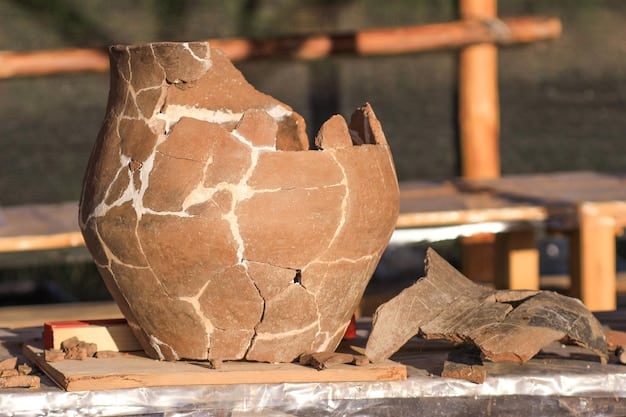
Archaeological excavations have unearthed a wealth of artifacts, offering us a means of finding out about their daily lives, belief systems, and technological capabilities. The examination of these artifacts—pottery, tools, and ornamental objects—has yielded valuable insights into the practices of the Mound Builders.
The Mound Builders were not just builders; they were skilled artisans, diligent farmers, and, above all, innovative engineers.
In essence, the Mound Builders were not a monolithic entity but a mosaic of cultures, each contributing uniquely to the landscape of North America. The artifacts they left behind serve as a tangible link to their existence.
The Purpose Behind the Mounds
The purposes of these mounds are varied. As archaeological techniques advance, scientists and researchers are better able to analyze and understand what these mounds were used for.
From burial sites to ceremonial platforms, each mound tells a story. New technological advances have allowed us to learn about the purpose behind their construction in greater detail.
Burial Mounds
Many mounds served as final resting places for the elite members of society. These burial mounds often contained elaborate grave goods, reflecting the status and importance of the deceased. Some of them include:
- Grave goods: Pottery, jewelry, and ritual objects were common items found in these burial mounds.
- Elaborate rituals: Burials were often accompanied by complex ceremonies, indicating a deep respect for the dead.
- Social hierarchy: The size and contents of the burial mounds often reflected the social standing of the individual.
Ceremonial and Platform Mounds
Other mounds were constructed as platforms for temples, residences, and other important structures. These mounds served as the nucleus of community life, and also show how advanced the society was.
Ceremonial mounds were often strategically aligned with celestial events, suggesting a sophisticated understanding of astronomy.
- Astronomical Alignments: Some mounds were aligned with the solstices and equinoxes, indicating a deep connection to the cosmos.
- Communal Gatherings: Ceremonial mounds were often the site of large gatherings and celebrations.
- Elevated Status: By elevating temples and residences, the Mound Builders may have sought to create a physical representation of social hierarchy.
Recent excavations have also unearthed evidence of large-scale feasting and communal gatherings, suggesting that the mounds played a central role in community life.
Cahokia: A Mississippian Metropolis
No discussion of the Mound Builders would be complete without mentioning Cahokia, one of the largest and most influential urban centers in pre-Columbian North America. The city offers an in-depth study into the lives of Mississippian peoples.
Located near present-day Collinsville, Illinois, Cahokia thrived from around 1050 to 1350 CE, boasting a population estimated to be in the tens of thousands and covers six square miles.
Monks Mound: A Marvel of Engineering
The centerpiece of Cahokia is Monks Mound, the largest earthen structure in North America. This towering platform, rising over 100 feet, served as the residence of Cahokia’s paramount chief and the hub of political and religious life.
The construction of Monks Mound required an immense amount of labor and resources, reflecting the power and organizational capacity of the Mississippian civilization.
Ongoing research at Cahokia continues to reveal new insights into the city’s layout, social dynamics, and the reasons behind its eventual decline.
Recent Discoveries at Cahokia
Recent investigations at Cahokia have unearthed evidence of sophisticated urban planning, including residential areas, craft workshops, and public plazas.
These discoveries showcase the advanced nature of Mississippian society and the complex infrastructure that sustained Cahokia’s large population.
Additionally, new studies of Cahokia’s agricultural practices have revealed that the city was supported by a highly productive system of maize cultivation, allowing for a surplus of food and a stable economy.
Cahokia serves as a testament to the ingenuity and organizational capabilities of the Mississippian culture. It also emphasizes The Mystery of the Mound Builders: What Recent Archaeological Evidence Reveals About Their Culture and Origins.
Trade and Exchange Networks
Recent archaeological evidence suggests that the Mound Builders were active participants in extensive trade and exchange networks, procuring raw materials and finished goods from distant regions. The trade routes were widespread and advanced.
These networks facilitated the movement of valuable resources, such as copper, obsidian, and marine shells, across vast distances, connecting different Mound Builder cultures and fostering cultural exchange.
Evidence of Long-Distance Trade
The presence of exotic materials at Mound Builder sites provides compelling evidence of long-distance trade. Copper from the Great Lakes region, obsidian from the Rocky Mountains, and marine shells from the Gulf Coast have all been found at various mounds, indicating a widespread network of exchange.
The implications of these trade networks extend beyond economic considerations, suggesting that the Mound Builders possessed advanced navigational skills, social networks, and diplomatic relations with other groups.
The routes enabled not only the trade of goods, but also the exchange of ideas.
The Role of Rivers in Trade
Rivers served as important arteries for trade and transportation, connecting different regions and facilitating the movement of goods and people. The Mound Builders strategically located many of their settlements near major waterways, enabling them to participate in these extensive trade networks.
The Mississippi River, in particular, played a central role in facilitating trade between the Mississippian cultures of the Southeast and the Hopewell cultures of the Ohio River Valley.
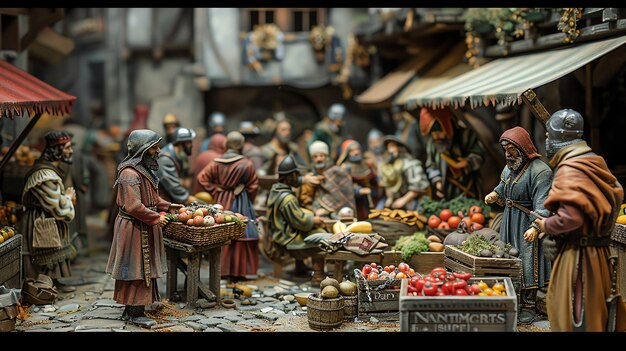
The study of these trade networks highlights the interconnectedness of the Mound Builder cultures and their engagement with a broader regional economy.
The Decline of the Mound Builders
The reasons behind the decline of the Mound Builders are complex and multifaceted, involving a combination of environmental changes, social factors, and external pressures. Climate changes may have had an impact on their way of life, for example.
Around the 14th and 15th centuries, many Mound Builder cultures experienced a period of decline, marked by population decline, the abandonment of major settlements, and the disintegration of social and political structures.
Environmental Factors
Climate change, deforestation, and soil exhaustion may have contributed to the decline of the Mound Builders by undermining their agricultural productivity and resource base. Extended droughts or floods could have severely impacted their ability to sustain their populations.
Furthermore, the intensive cultivation of maize may have led to soil erosion and nutrient depletion, reducing the long-term viability of their agricultural systems.
Deforestation, driven by the need for fuel and building materials, may have also contributed to environmental degradation and the loss of biodiversity.
Social and Political Factors
Internal conflicts, social unrest, and the rise of new power centers may have also played a role in the decline of the Mound Builders. Competition for resources and political dominance could have led to instability and fragmentation.
The emergence of new social hierarchies and the concentration of power in the hands of a few may have created tensions and resentment among the broader population.
The disruption of trade networks and the introduction of new diseases by European colonizers further destabilized Mound Builder societies, accelerating their decline.
The end of the Mound Builder era marks a pivotal moment in North American history, underscoring the complex interplay of environmental, social, and political factors in the rise and fall of civilizations.
| Key Point | Brief Description |
|---|---|
| 🏗️ Mound Builders | Diverse cultures that built earthen structures in North America. |
| 📍 Cahokia | Largest urban center of the Mississippian culture, known for Monks Mound. |
| 💰 Trade Networks | Extensive exchange routes for materials like copper and obsidian. |
| 📉 Decline | Caused by environmental issues, social unrest, and disease. |
Frequently Asked Questions
The Mound Builders were various indigenous cultures in North America that constructed earthen mounds for ceremonial, burial, and residential purposes, spanning from 3500 BCE to the 16th century CE.
Cahokia was the largest urban center of the Mississippian culture, located near present-day Collinsville, Illinois. It was known for its massive earthen mounds, including Monks Mound, and its complex social structure.
The Mound Builders participated in extensive trade networks, exchanging goods such as copper, obsidian, and marine shells over long distances. This facilitated cultural exchange and economic growth.
The mounds served multiple purposes, including burial sites, platforms for temples and residences, and ceremonial centers. Each type of mound reflects different aspects of the Mound Builders’ culture and social organization.
The decline was influenced by climate change, deforestation, soil exhaustion, internal conflicts, and the introduction of new diseases by European colonizers, leading to population decline and social disintegration.
Conclusion
The Mystery of the Mound Builders: What Recent Archaeological Evidence Reveals About Their Culture and Origins continues to unfold to this day. New discoveries are constantly reshaping our understanding of these ancient civilizations and their contributions to North American history.
The legacy of the Mound Builders remains visible across the landscape, reminding us of the ingenuity, resilience, and cultural diversity of the indigenous peoples who once thrived in the region.

